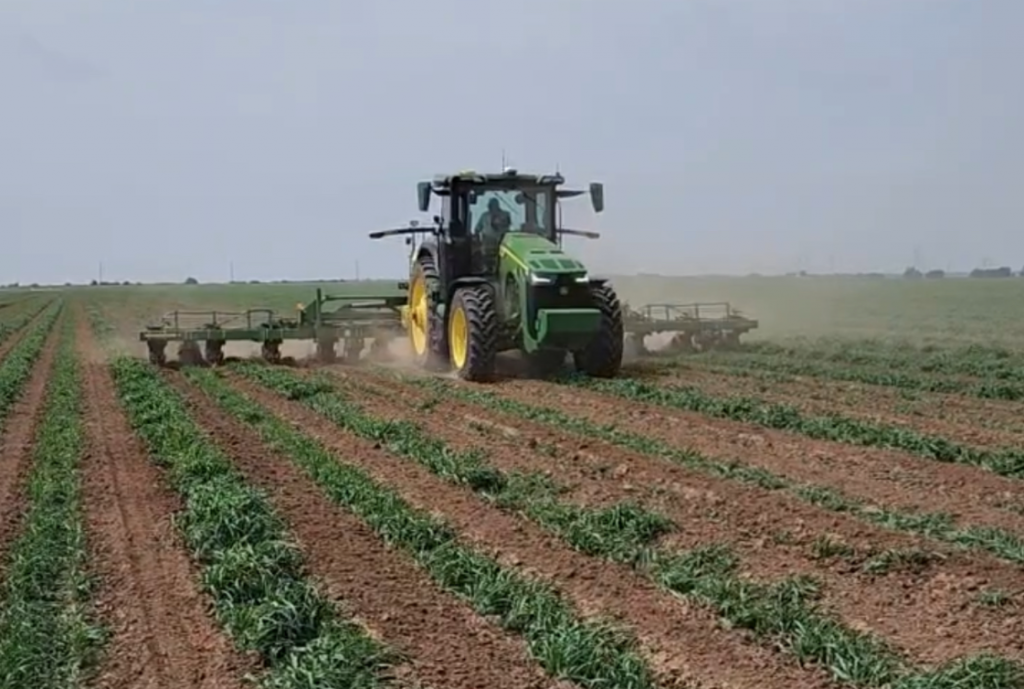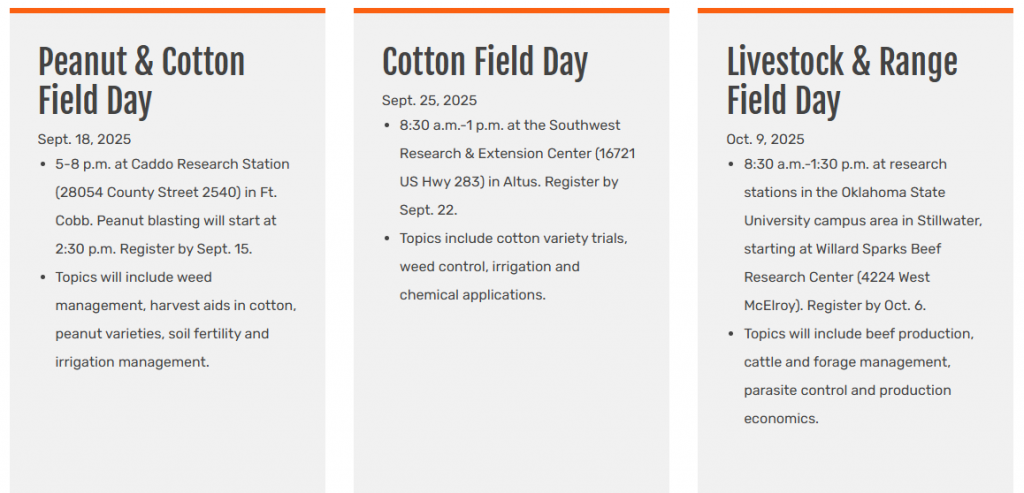
Farm Director KC Sheperd spoke with Cotton Assistant Extension Specialist at Oklahoma State University, Maxwell Smith, who provided insights into this year’s cotton season. Cotton growers in southwest Oklahoma are experiencing a positive shift this year, thanks to improved irrigation conditions and early-season rainfall. “Definitely a change of pace from the last three years,” said Smith. “About a week and a half ago, the water out of Lake Altus-Lugert was opened up and moving down the canals, and by Wednesday, it was being applied to the field.” He noted that producers are more optimistic than in recent seasons: “The crop is looking really good, pest pressure has been really, really low thus far this season.”

Compared to previous years of extreme drought or excess rainfall, this year began on a much better footing. “We started this year with a really good moisture profile in our soil, and planting conditions were really good,” Smith said. While there was some early weather damage that led to replanting, “intermittent rainfall for about a month” helped establish strong early growth and delayed the need for irrigation, conserving water for later in the season.
Despite the early-season rains, Smith acknowledged the faucet may already be turning off. “In the last two to three weeks, it hasn’t rained very much… but getting all that moisture early really stretches us further into the season without relying on irrigation,” he explained. This reserve will be critical as the cotton enters peak bloom in late July and August, when plants are most vulnerable to stress. “We have that irrigation water still in our reserves… to help us finish a good crop.”
Smith also warned of potential pest threats as the season progresses. “Anybody who’s growing corn or sorghum this year has probably seen all the worm issues,” he noted, citing corn earworms moving across crops. While armyworms haven’t been prominent in southwest Oklahoma yet, he advised growers to stay vigilant: “There has been word of them moving… definitely something to keep an eye on.” Managing plant growth with regulators and monitoring pest pressure will be essential moving forward.
Looking ahead, Smith emphasized a few key steps to ensure success. “We’re going to hope for an open fall,” he said, “making sure we stay warm, don’t have an early freeze.” He added, “Timing our irrigation correctly, not overwatering… and staying on top of our pests” will be vital. Smith praised the region’s early weed control efforts, saying, “Fields around Oklahoma look really clean, so I’m really proud of how everybody had a good weed program.” With careful management and continued good weather, growers have real potential for a strong cotton harvest in 2025.
Smith said there are some field days scheduled for the next few months. For all those events, and more information, click here:


















